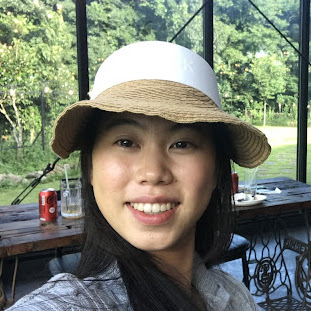Previous innovations in education, including the use of technology, have started and remained in the schools which have been able to afford them. Creativity, passion, and collaboration must not follow these boundaries.
Naomi Kim, Young Learner
Moving countries every three years, it became normal for me to compare the different schools I’d been to. I attended both private and public schools, and the differences were stark. But, even among the public schools, there were variations. Each country had unique policies which defined their emphasis on education, methods of learning, and solutions to educational inequity.
While such differences did exist, I was fortunate to attend schools that generally valued a collaborative and creative learning environment. I thrived in these settings, applying math concepts to create fun games, giving my own lecture on topics like Hong Kong’s Umbrella Movement and China’s Uyghur Genocide in social studies class, and taking apart literature with my classmates in a debate-style seminar. Not only did these projects inspire a love of learning within my young self, but they also taught me more valuable lessons on innovation, collaboration, and grit, which is why the most memorable events of my childhood were at school.
Cultivating a Love of Learning Across Countries
I still remember the time in England when I cried because of the combination of an impending deadline and a non-cooperative teammate. Believing it was the only solution, I completed my part to the best of my ability and submitted the project half-complete with an explanation of my predicament. To my great surprise, I was returned a low grade, not for the quality of the project, but for the obvious lack of a group effort. Though disappointing, it was through this experience I learned “group work” was not simply cutting an assignment’s work into smaller pieces and distributing them to individual members of the group, but an opportunity to embrace the differences in opinion and learning styles between me and my classmates. I’m now able to integrate each member’s strengths to work together for a stronger, more efficient, and friendlier team — not connected by one-sided demands, but by mutual encouragement and constructive feedback.
I will also never forget the time in Hong Kong when I spent hours surfing the web to learn why fractions worked the way they did after my teacher walked me through a difficult practice question. Noticing I quickly gave up on unfamiliar math problems because I relied on a memorized set of processes more than my own critical thinking, she challenged me to understand. Since then, I haven’t been satisfied with given answers, and instead, find excitement in exploring the complex explanations behind simple facts. Strengthening the connections between various concepts has not only made learning easier — it has also grown my love for problem-solving.
And finally, whenever I hear opinions different from mine, I am reminded of the time in Singapore when I discovered through a class debate on marijuana legalization the grey area nestled between the false dichotomy. When we first began the conversation, I was convinced my perspective (and only my perspective) was correct. I engaged in debate with another classmate who sported opposing ideas for the full sixty-minute period, while others chimed in and our teacher moderated. Our homework that night became to research the topic. It was then I realized, to my mortification, that half of the key points from both my opponent and myself had been mere rhetoric. The answer to the debate was that there was no one answer. Through this experience, I not only learned the importance of challenging my own biases, but also the importance of appropriately challenging those found around me, including in social media, the school curriculum, and even from my friends and family.
These experiences, sprinkled among the various countries I lived in, defined the exciting and various education systems I had grown up loving.
The “only one correct answer” environment allowed students to stay competitive through cheating, rather than understanding the topic and thinking critically.
Naomi Kim, Young Learner
From Obstacle to Opportunity
When I moved to the US, I was surprised by the new school I was in. I appreciated how the students had a more casual relationship with their teachers, which for some students, offered a greater sense of intimacy. However, while the student-teacher relationship seemed closer, the student-student relationship was the opposite. The rows of seating and the individual projects seemed to foster an environment of competition, one which limited student creativity by confining them to the rules of the standard curriculum. I soon realized that this system didn’t encourage student growth, rather it created conditions for the opposite. The “only one correct answer” environment allowed students to stay competitive through cheating, rather than understanding the topic and thinking critically.
Only a few months after the move, both school and the world were shut down by COVID-19. Distance learning further impeded efforts at a creative curriculum, and the busywork nature of our assignments increased. Furthermore, my transition into high school only disappointed my hopes of an academically engaging environment, and eventually, I realized that I no longer saw learning as an intriguing opportunity for growth, but rather as a stressful task. To combat this mindset, I decided to join a virtual, student-run tutoring club to explore the instructional side of education.
But, being a tutor exposed me to more than teaching. Working with the Salvation Army to tutor elementary school children from underserved communities, I witnessed the inequity of educational resources between low and high-income districts. The learners I worked with had minimal access to school materials, and many of them had never physically met their teachers. As a result, not only were they behind many of their peers, but they also lost their love for learning. They found typical lessons on fractions and addition very difficult, to no fault of their own. Instead, it was due to the boring nature of virtual learning and the shortened attention spans from quarantine. Therefore, I turned to my own experience and began using fun activities to engage them instead.
When exploring how to add time, I unhooked the clock from my wall and showed the learners how to play with it. When discussing operations, I used the pens on my desk, and then reviewed the concepts with games like Kahoot! To assess the year’s learning, instead of giving a test, I assigned a project to design a building following requirements that incorporated topics like factors, order of operations, geometry, and basic algebra. As these learners progressed in their learning journey, I embarked on my own quest to find how to make the excitement of problem-solving and learning go hand in hand.
Eventually, when the tutoring club disbanded, I created my own, the Red Shield Tutors, working with the same non-profit but expanding it to include more tutors, cover both year-long and summer instruction, and embrace creativity and collaboration as its core values. We even began organizing in-person events, including a summer camp where we facilitated hands-on activities like learning about solar power by making smores in DIY solar ovens, playing math trivia basketball, and practicing the basics of argument construction through a debate on whether Bad Bunny or BTS were better artists. (My pick is BTS, but I’ve been listening to Bad Bunny ever since the debate.) We continue to tutor to this day. A couple of weeks ago, we hosted a party at the Salvation Army’s center in LA where we celebrated the kids’ hard work with food and games. The tutors were shown gratitude from the learners with hugs and high-fives.
Key Takeaways from My Learning Journey
Through my tutoring experience, I’ve come much closer to answering my question: what is the best way to encourage meaningful and enjoyable learning? Though I still don’t have the complete answer, and don’t expect myself to without conducting research (which I hope to do in the future), this experience has reinforced my understanding of the importance of creativity and collaboration in education. In order to promote learner-centered education, education reform or transformation must consider the necessity of these factors in fostering the love of learning within students.
However, this transformation must not fit into the recesses of educational disparity. Previous innovations in education, including the use of technology, have started and remained in the schools which have been able to afford them. Creativity, passion, and collaboration must not follow these boundaries. Instead, we must look to these as being the keys to give all students, regardless of income and ethnicity, the opportunity to love learning. We can strive towards this goal of equitable innovation together through creativity and collaboration, this time, on the part of our learners, communities, schools, and governments.

